1. Guns Were Everywhere—And Hardly Anyone Knew How to Use Them
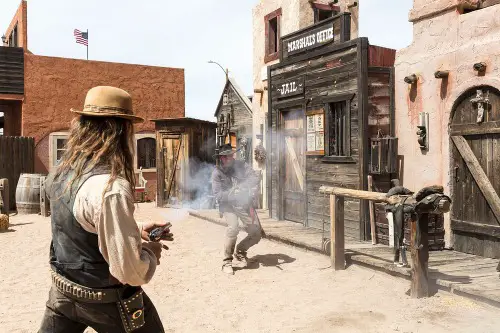
Despite what Hollywood would have you believe, most people in the Old West weren’t expert marksmen. Many settlers owned guns, but they were often poorly maintained, unreliable, and rarely used for actual combat. Accidental discharges were common, and inexperienced shooters sometimes harmed themselves more than their enemies. Even in the famous gunfights, bullets often missed their mark, leading to chaotic and deadly shootouts.
On top of that, some frontier towns banned carrying guns to prevent violence from getting out of hand. Dodge City and Tombstone, for example, required visitors to check their weapons with the sheriff. But that didn’t stop criminals and outlaws from keeping hidden weapons or ignoring the rules entirely. The mix of armed civilians and bad aim made gun violence an unpredictable and constant threat.
2. Lawmen Were Often Just as Dangerous as Outlaws
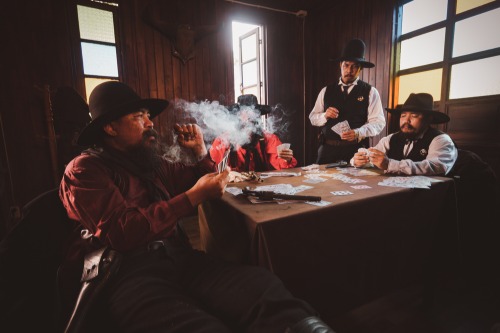
Sheriffs and marshals were supposed to keep order, but many were just as corrupt and violent as the criminals they pursued. Some were former outlaws themselves, using their badges as an excuse to settle old grudges. Lawmen like “Wild Bill” Hickok and Wyatt Earp had reputations for gunning down their enemies, often bending the law to their advantage. The justice system was inconsistent at best, and trials were often a mere formality.
In some cases, hired gunmen acted as law enforcement, making towns little more than battlegrounds for personal feuds. The infamous Dodge City War in 1883 was a standoff between rival lawmen fighting for control of the town. Even in well-established places, vigilante groups often took matters into their own hands. If you were accused of a crime—guilty or not—you could easily find yourself at the end of a rope.
3. Native American Conflicts Were Brutal and Constant
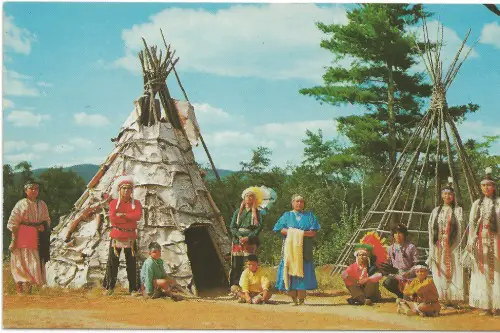
The westward expansion of settlers led to violent conflicts with Native American tribes defending their land. Many settlers feared raids, but Native Americans also suffered relentless attacks from militias and the U.S. Army. The Sand Creek Massacre in 1864 saw soldiers slaughter over 150 Cheyenne and Arapaho people, most of them women and children. In retaliation, some Native groups launched brutal raids on settlements, making the frontier a dangerous place for both sides.
Even those who tried to avoid conflict often got caught in the crossfire. Travelers along trails like the Bozeman and Oregon routes risked ambushes, and stagecoaches were frequent targets. The government responded with more military force, leading to wars that raged for decades. For settlers and Native Americans alike, life on the frontier often meant living in a constant state of fear.
4. Disease Was a Bigger Killer Than Guns
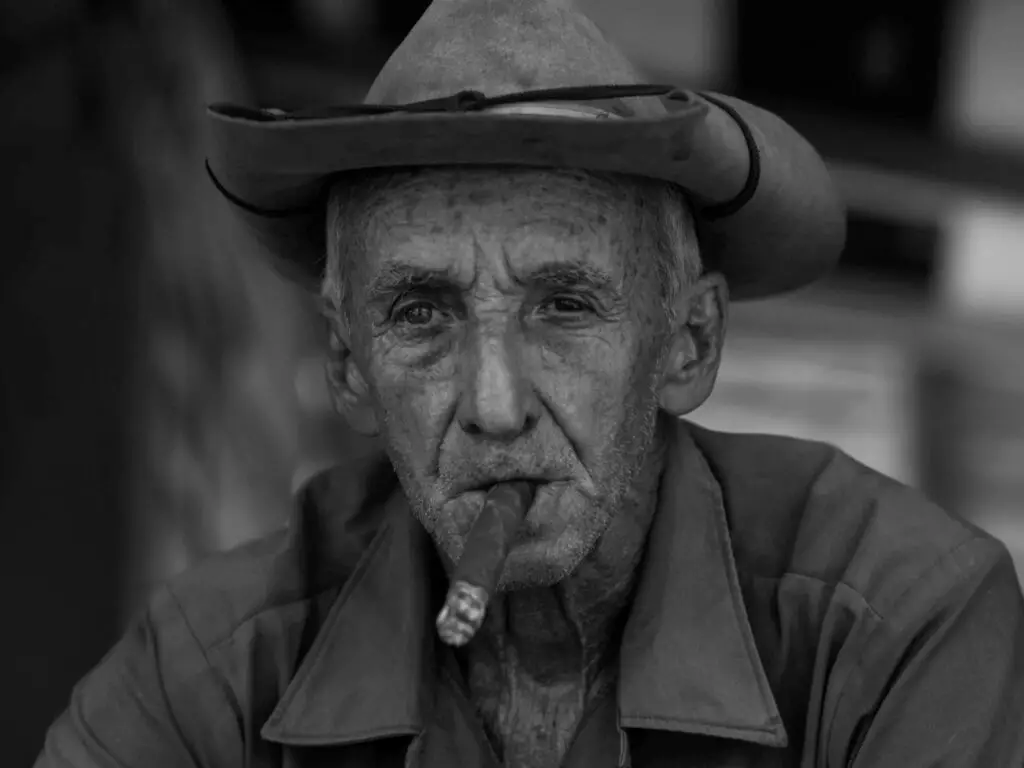
Forget gunfights—disease was the real Grim Reaper of the Old West. Towns lacked proper sanitation, and drinking water was often contaminated with bacteria, leading to deadly outbreaks of cholera, dysentery, and typhoid fever. Doctors were few and far between, and medical knowledge was limited, so minor infections could turn fatal. People relied on questionable remedies, including mercury-based medicines and “snake oil” treatments that often did more harm than good.
Tuberculosis, or “consumption,” was rampant, killing thousands with no real cure in sight. Smallpox outbreaks devastated entire communities, with some towns losing half their population in a matter of weeks. Vaccination existed, but it was controversial and not widely available. Between poor hygiene and a lack of effective treatments, many people didn’t live long enough to die in a gunfight.
5. Frontier Justice Meant Swift and Often Unfair Hangings

The legal system in the Old West was often a joke, with “justice” being served on the spot. Accusations alone could lead to a public hanging, especially if a mob was angry enough. Some lynchings were racially motivated, targeting Black, Mexican, or Chinese laborers accused of crimes with little to no evidence. Even white settlers weren’t safe—stealing a horse or cattle could be a death sentence, whether you were guilty or not.
Vigilante groups sometimes took over entire towns, deciding who lived and who died with little oversight. The infamous Montana Vigilantes executed at least 20 men in the 1860s, claiming they were cleaning up crime. Some people got a “fair” trial, but with juries made up of locals looking for quick justice, the outcome was often the same. If you ended up on the wrong side of the law—or the wrong side of popular opinion—you were in serious trouble.
6. The Weather Could Kill You Just as Easily as an Outlaw
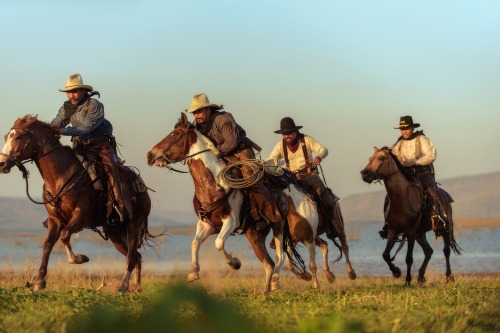
The Old West wasn’t just dangerous because of people—it was also a battle against nature. Winters in places like the Dakotas and Montana were brutal, with freezing temperatures that could kill in hours. On the flip side, desert regions like Arizona and New Mexico saw extreme heat, dehydration, and deadly sandstorms. If you got caught in a blizzard or lost your way in the desert, your chances of survival were slim.
Droughts and floods destroyed crops, leaving settlers starving or forcing them to move elsewhere. Tornadoes were another terrifying reality, ripping through homesteads with little warning. Ranchers and cowboys on long cattle drives could get stranded in sudden storms, leading to deadly stampedes. Surviving the elements was often just as challenging as avoiding outlaws and disease.
7. Railroad Towns Were Havens for Crime
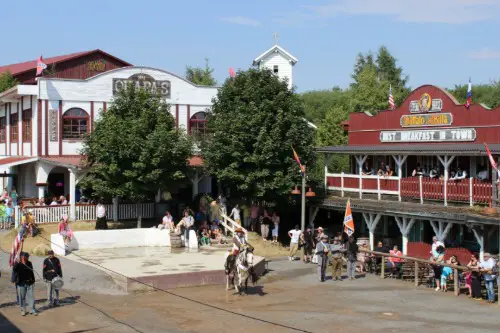
The expansion of the railroad brought more people west, but it also created some of the most lawless places in America. Boomtowns sprung up overnight, attracting gamblers, drifters, and criminals looking to make quick money. Towns like Dodge City, Kansas, and Laramie, Wyoming, became infamous for their violent saloons and frequent shootouts. Prostitution, theft, and murder were common, and law enforcement was often too weak or corrupt to do anything about it.
Train robberies were another major problem, with gangs like the James-Younger Gang and Butch Cassidy’s Wild Bunch targeting cash shipments. Passengers were often held at gunpoint, and resisting could get you killed. Railroad companies hired armed guards, but that didn’t stop the most determined outlaws. For a time, riding the rails was one of the riskiest ways to travel.
8. Outlaws Were More Organized Than You Think
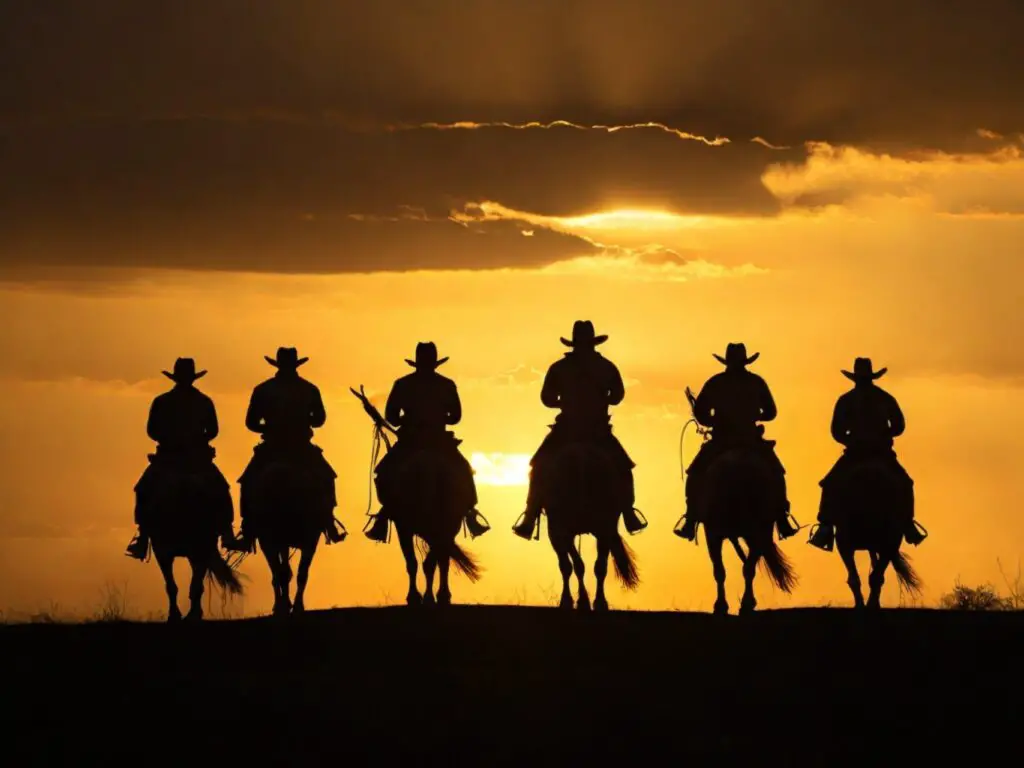
We tend to think of outlaws as lone wolves, but many operated in well-organized gangs. Groups like the Dalton Gang, the Wild Bunch, and the Rufus Buck Gang carried out coordinated robberies and terrorized entire regions. Some gangs had connections with corrupt lawmen or politicians, making them even harder to stop. The Jesse James Gang, for example, had inside help from local supporters, allowing them to evade capture for years.
These gangs weren’t just robbing banks—they were ambushing stagecoaches, looting supply trains, and even attacking military outposts. Some, like Billy the Kid’s crew, had running feuds with rival factions, leading to deadly shootouts. Lawmen trying to stop them often found themselves outnumbered or even outgunned. If you crossed the wrong gang, your odds of survival weren’t great.
9. Cattle Rustling Could Get You Killed
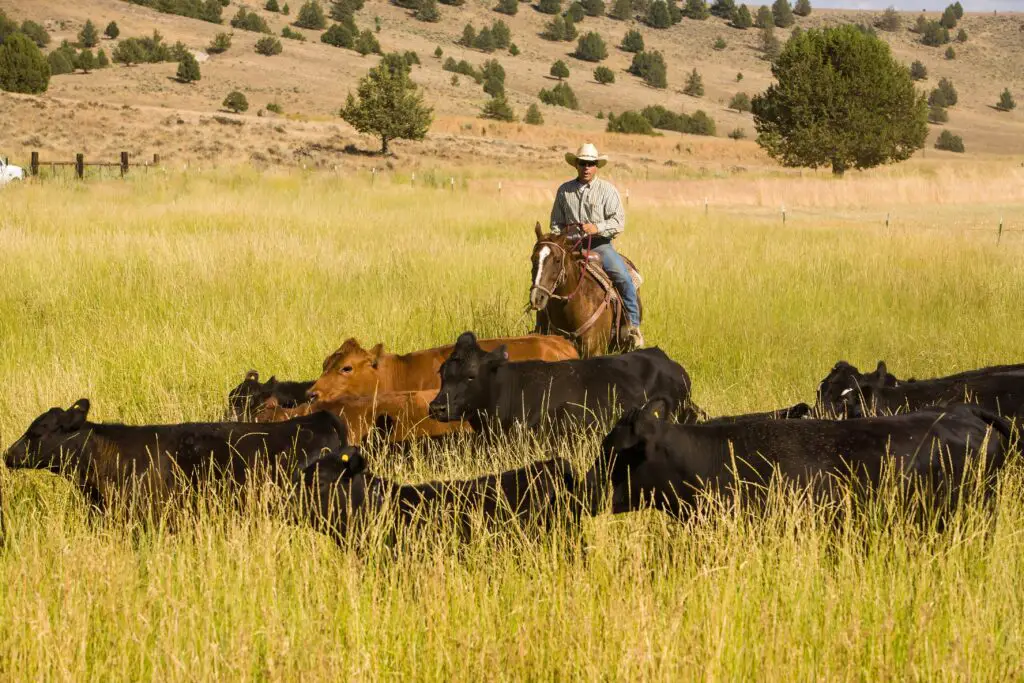
Stealing cattle was a major crime in the Old West, and it often led to deadly consequences. Ranchers and cowboys took livestock theft seriously, as a single stolen cow could mean a huge financial loss. Many areas had “rancher vigilante” groups that didn’t hesitate to hang suspected rustlers without a trial. Even if you were falsely accused, once a mob had made up its mind, there was little you could do to prove your innocence.
The Johnson County War in Wyoming was one of the most infamous examples of cattle-related violence. Wealthy ranchers hired gunmen to take out small-time cowboys they accused of rustling, leading to open warfare. The range wars of Texas and New Mexico saw similar conflicts, where ranchers and hired guns fought brutal battles over land and livestock. In some cases, even law-abiding settlers got caught up in the violence, proving that cattle disputes were anything but simple.
10. River Travel Was Just as Deadly as Wagon Trails
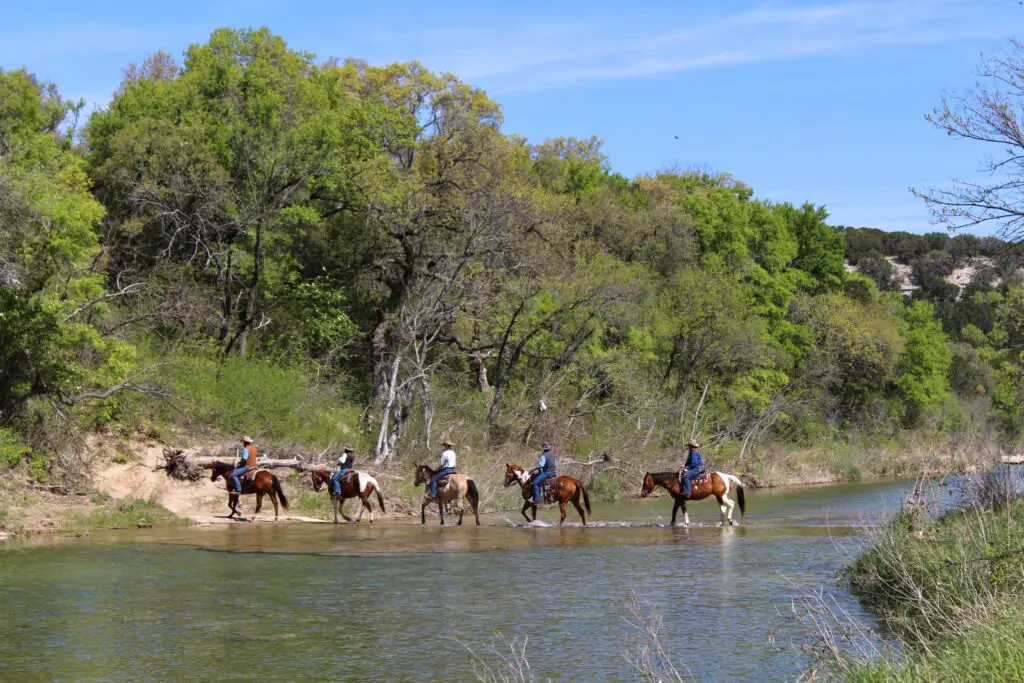
Before the railroad became widespread, riverboats were a major way to travel and transport goods, but they came with their own dangers. Steamboats were prone to boiler explosions, and since safety regulations were almost nonexistent, hundreds died in preventable accidents. The worst disaster was the explosion of the Sultana in 1865, which killed over 1,800 people—more than the Titanic. Even when the boats didn’t explode, navigating western rivers was hazardous due to shifting sandbars, debris, and unpredictable currents.
River travel also carried the constant risk of bandits and hostile attacks. The Missouri and Mississippi Rivers were notorious for river pirates who looted boats and sometimes murdered passengers. Some gangs operated ferry scams, pretending to offer safe passage only to rob travelers mid-river. If you thought crossing the plains was risky, taking a riverboat wasn’t much safer.
11. Gold Rushes Brought More Violence Than Wealth
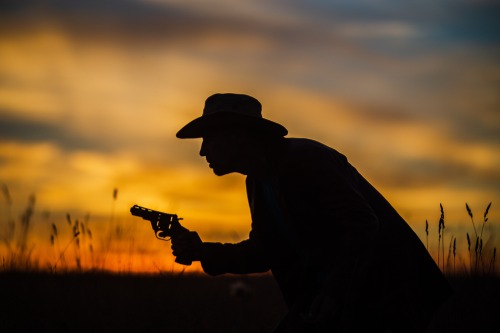
The promise of gold lured thousands west, but most left with empty pockets—or worse, ended up dead. Boomtowns popped up overnight, filled with desperate prospectors, conmen, and criminals looking to strike it rich by any means necessary. Claim-jumping—where one miner would steal another’s plot—often led to violent fights or outright murder. Even if you found gold, keeping it safe was another challenge, as theft and robbery were constant threats.
Mining itself was incredibly dangerous, with cave-ins, gas explosions, and unsafe working conditions killing thousands. Saloons and gambling halls in gold towns were breeding grounds for drunken brawls, stabbings, and shootouts. The law was often slow to arrive, and vigilante justice ruled in many mining camps. For many, the Gold Rush wasn’t a dream come true—it was a death trap.
12. Food and Water Could Kill You
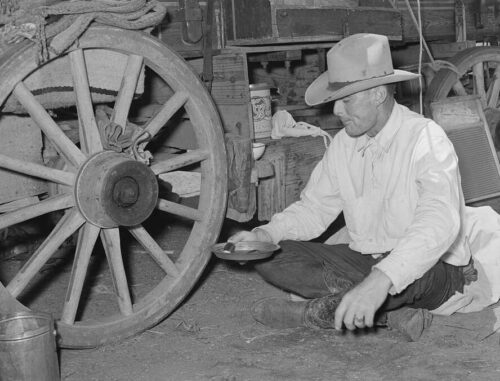
Something as simple as eating or drinking could be a life-or-death gamble in the Old West. Fresh produce and clean water were hard to come by, and settlers often relied on whatever they could find—sometimes with disastrous results. Many people suffered from lead poisoning due to poorly made cookware, while others fell ill from spoiled meat or contaminated water. Botulism, food poisoning, and malnutrition were just as dangerous as any outlaw.
Even on the trails, settlers often misidentified poisonous plants or drank from water sources tainted with animal waste. The risk was even higher in boomtowns, where food was often stored improperly and spoiled quickly. Some frontier communities were hit with mass poisonings from tainted flour or milk, wiping out dozens at a time. In a place where survival was already tough, a bad meal could be the thing that finished you off.
13. Stagecoach Travel Was a Gamble With Your Life
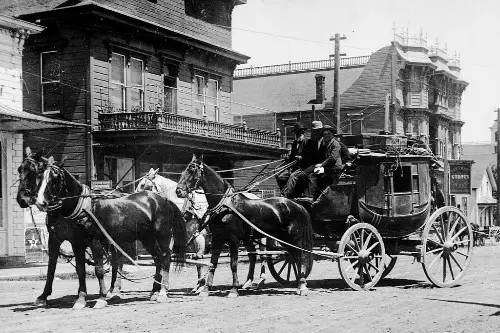
Stagecoaches were a popular way to cross the frontier, but the trip was anything but safe. Roads were rough and poorly maintained, so crashes and overturned coaches were common. Horses spooked easily, sometimes bolting downhill and throwing passengers from their seats. Even without bandits, just riding inside one of those swaying wooden boxes was a dangerous ordeal.
Then there were the highwaymen waiting along the route. Gangs frequently stopped stagecoaches, robbing travelers at gunpoint and leaving them stranded miles from help. If a passenger resisted, they were often shot on the spot. Between the natural hazards and human threats, riding a stagecoach was a true roll of the dice.
14. Alcohol Fueled Deadly Violence
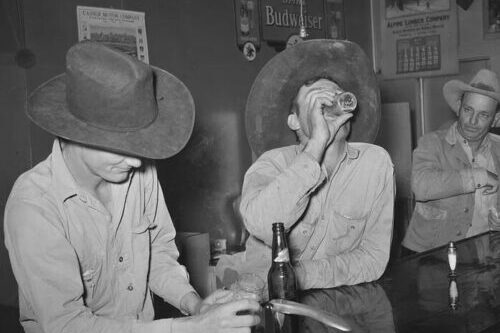
Saloons were the social hubs of the Old West, but they were also powder kegs of violence. Cheap whiskey flowed freely, and drunken arguments often turned into bloody brawls. Fistfights escalated quickly to stabbings or gunfights, especially when gambling or cheating was involved. In some towns, barroom killings were so common they hardly made the news.
Alcohol abuse also had long-term consequences. Many frontier men drank daily, leading to poor judgment and increased aggression. Domestic violence was rampant, and families often bore the brunt of alcohol-fueled tempers. What was meant as a way to escape hardship frequently ended in tragedy.
15. Travel by Wagon Was a Death Trap
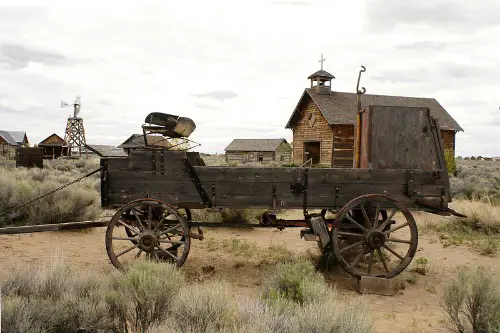
The image of pioneers rolling west in covered wagons hides how risky the journey really was. Wagons broke down constantly, and settlers were left stranded miles from the nearest town. Oxen or horses sometimes died mid-journey, leaving families with no way to move forward. Even crossing rivers was perilous—wagons tipped over easily, drowning people and animals alike.
On top of accidents, wagon trains were magnets for bandits and raiders. Families often huddled together in circles at night for safety, but even then they weren’t guaranteed protection. The long weeks of exposure meant starvation, disease, and exhaustion were constant threats. Many never reached their destination, their graves left along the trail.
16. Wild Animals Were a Constant Threat

The frontier was home to dangerous predators that could end a life in minutes. Bears, mountain lions, and packs of wolves sometimes attacked settlers, livestock, or lone travelers. Snakes were another hazard, with rattlesnakes hiding in boots or underbrush ready to strike. A single bite, without access to medical care, was often a death sentence.
Even smaller animals posed risks. Coyotes and wild dogs spread rabies, while insects carried diseases settlers barely understood. Livestock could also turn deadly—bulls, wild horses, and stampeding herds killed countless cowboys. Nature was unpredictable, and survival often depended on sheer luck.
17. Fire Could Wipe Out Entire Settlements
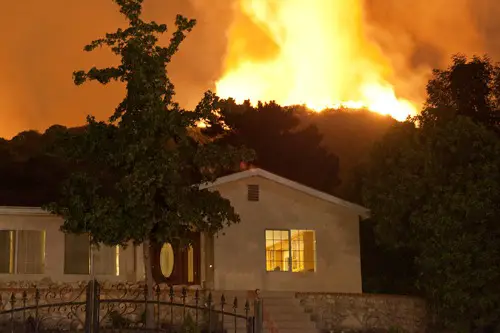
With wooden buildings packed close together, frontier towns were tinderboxes waiting for disaster. A single knocked-over lantern or chimney spark could ignite a blaze that spread through an entire street in minutes. Firefighting equipment was primitive, and most towns had little more than bucket brigades. Once flames started, saving property—or even lives—was often impossible.
Prairie and forest fires were just as terrifying. Drought and high winds turned the land into fuel, and settlers often had no warning before fire swept across miles. Homesteads, crops, and livestock were destroyed in hours, leaving families destitute. In the Old West, fire was one of the fastest and most merciless killers around.
18. Banking Was Risky Business
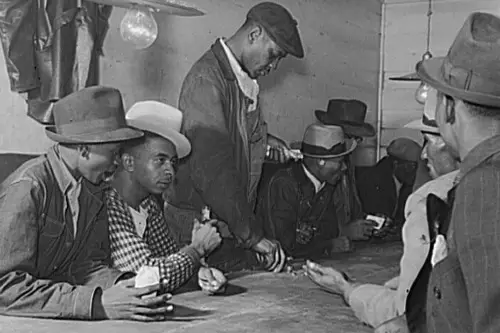
Carrying money or keeping it in a bank was never safe in the Old West. Banks were prime targets for gangs, and robberies often ended in shootouts that endangered everyone nearby. With little law enforcement, stolen funds were rarely recovered, and depositors could lose everything overnight. Many settlers simply hid their savings, only to risk theft at home instead.
Fraud was just as common as outright robbery. Conmen ran fake banks or offered worthless loans, swindling settlers who were desperate for credit. Even trusted banks could collapse suddenly, wiping out life savings. In a world without financial safeguards, trusting your money to anyone was a gamble.
19. Medicine Was as Likely to Kill as Cure
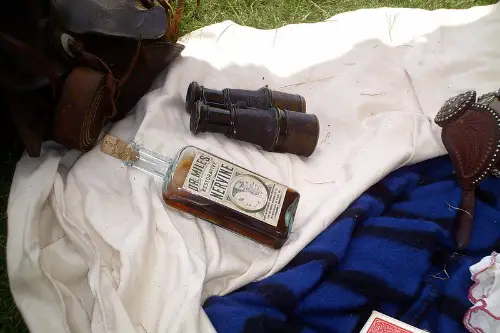
Doctors in the Old West had limited knowledge, and many treatments were more dangerous than the illnesses. Bloodletting, opium-laced syrups, and mercury-based medicines were standard practices. Anesthesia was crude, meaning surgeries were brutal ordeals that often ended in infection. With no antibiotics, even small wounds could fester and turn fatal.
Quacks and traveling “doctors” made things worse. Snake oil salesmen promised miracle cures that were nothing more than alcohol or toxic chemicals. People desperate for relief often poisoned themselves without knowing it. For many on the frontier, seeking treatment was just another way to hasten death.
20. Mining Towns Were Powder Kegs of Violence
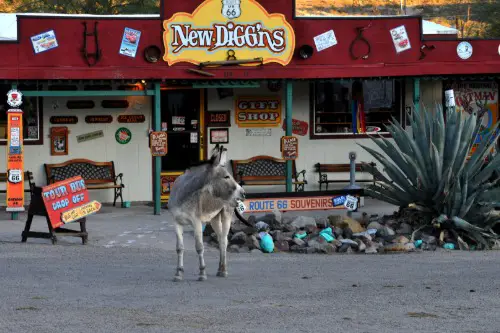
Mining booms attracted thousands, but the mix of money, alcohol, and desperation made these towns among the most dangerous. Claim disputes turned bloody, with gunfights erupting over who owned a patch of land. Rival ethnic groups clashed in violent riots, as immigrants and locals competed for scarce jobs. Saloons and brothels only added to the chaos, fueling more fights and killings.
Explosives used in mining also caused horrific accidents. Unstable tunnels collapsed without warning, trapping or crushing workers. Dust and toxic gases suffocated miners who spent long hours underground. For those chasing fortune in mining towns, danger was part of the daily routine.
This post 20 Things That Prove the Old West Was More Dangerous Than You Think was first published on American Charm.


